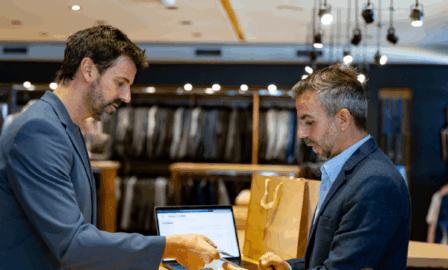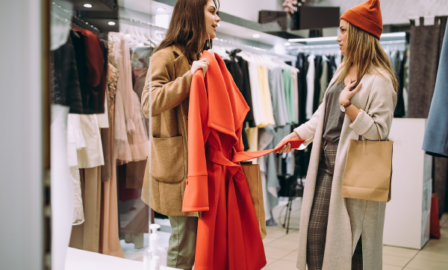What Do Retailers Need to Know About Revenge Shopping?
As COVID restrictions are withdrawn and consumers increasingly feel more comfortable shopping in person, there has been a rise in the spending pattern termed ‘revenge shopping.’ Essentially, consumers who haven’t been able to shop in person are making up for lost time by spending far more than usual. This is significant for large retailers and small businesses alike who have been using the extra revenue as a lifeline.
While revenge shopping has already been occurring in the US and China for nearly a year, new COVID-19 variants that push consumers back indoors can serve as fresh kindling. After an April 2022 lockdown was lifted in Hong Kong, customers fanatically rushed back out to shopping malls, luxury retailers, and department stores. This is important because new variants of COVID – or anything else that prevents consumers from shopping in person – show that they can reignite the ‘revenge.’
Below are some important considerations for retailers as revenge shopping makes a reappearance in 2022.
Catalysts and Effects
A combination of different factors created the perfectly pent-up consumer ready to spend. While COVID was largely responsible for eCommerce sales increasing by $244.2 billion (43%) in 2020 alone, consumers still had strong demand for in-person shopping. Retail closures, stay-at-home orders, and general unease forcing them to stay home certainly continued to stoke those demands. In tandem, increased savings and thousands of dollars in stimulus from the government provided some consumers with the means to spend and nowhere to spend it in person.
The floodgates began to open in early 2021 with higher vaccination rates, mask mandates dropping, and an acceptance of the ‘new normal.’ Concert ticket sales were up 45% as of February 2022 compared with the same period in 2019, and other in-person spending – like at movie theaters, gyms, and department stores – followed similar trends. But the rush back to in-person spending was not all glee for retailers. Many were forced to blindly react by increasing inventory, scheduling overtime for employees, and placing orders from third-party manufacturers to avoid bare shelves. Due to supply chain issues across the globe, fulfilling these goals became considerably more difficult.
The Unforeseen Storm
Despite delays and extra costs, retailers did eventually stockpile their inventories full of the hottest items like exercise bikes, casual clothing, patio furniture, and cleaning supplies. But what major brands were completely unprepared for was the abrupt shift in consumer tastes in mid-2022. Customers rapidly changed preferences to become more socially conscious and now have high demand for beauty products, dress attire, and back-to-school apparel. The result? Retail giants like Macy’s, Target, and Walmart are stuck with huge inventories that fewer people want.
Target reported a 43% increase in inventory in the April quarter as demand for the stockpiled products declined. Consequently, retailers are seeing profit margins fall because of this surplus in the wrong product categories. Desperate to offload, brands are facing fees from canceling orders and shrinking margins by offering discounts. While Target is the most recent to report such a financial predicament, it’s certainly not alone. Walmart, Gap, and Macy’s have similarly seen stock prices fall as weaker earnings are reported.
A Note on Luxury Retail
The luxury retail market was the true instigator of revenge shopping. Shoppers raced to retailers like Hermès, Louis Vuitton, and Gucci to participate in one of the luxury market’s foremost pillars: experience. One Hermès store in Guangzhou sold $2.7 million on reopening day in mid-2020, and 2022 is certainly no exception. The recent reopening of Shanghai in June 2022 similarly resulted in lines wrapped around luxury stores.
Consumers appear to be less price-sensitive amidst the reopenings – a welcome sight for luxury retailers across the world. China served as an early warning for American manufacturers and retailers before revenge shopping swarmed U.S. malls and department stores in 2020 and 2021. Now with the same trends reappearing, retailers would be wise to be cautious with inventories and product category orders.
Revenge Shopping Takeaways
‘Just-in-time’ manufacturers and retailers supplied by them need to anticipate periods of revenge shopping. In order to stock shelves with not only the right amount, but also the type of products that are in demand, brands may need to rethink planning out expected consumer tastes too far in advance. Especially with the supply chain bullwhip, it’s imperative that retailers develop strategies to prepare for future disruptions which could prompt revenge shopping.
Rapidly adjustable inventory is improving as supply chains open, but a leading retail strategy partner is just as important for additional issues like balancing inventory. Retailers need to evaluate consumer behavior in light of rising inflation and expiring lockdowns and prepare to delight “revenge shoppers” with the right quantities and product mix.
Subscribe to Clarkston's Insights
Contributions from Jake Park-Walters



